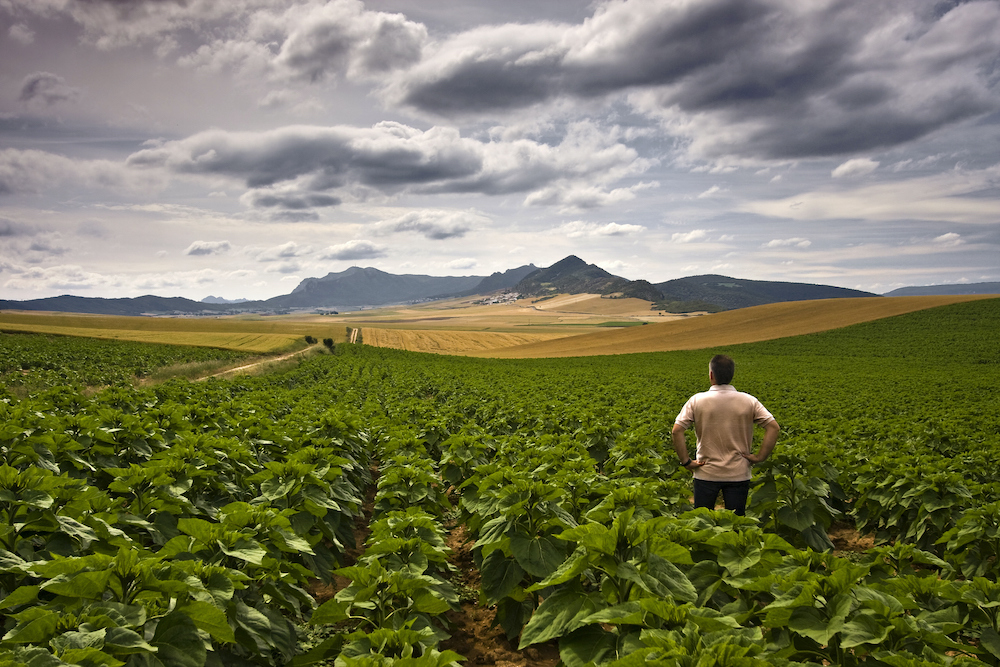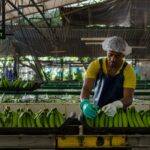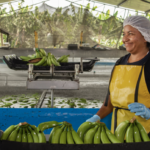Opinion: fair trade produce goes from strength to strength

By Fair Trade USA produce and floral director Hannah Freeman
 Fair Trade Certified products showed a 75% year-on-year rise in 2011 according to figures from official third party verifier, SPINS LLC. This overall growth in sales was largely driven by nationally-distributed brands increasing their commitment to Fair Trade. As a result, Fair Trade USA and its partners delivered over US$1.27 million in premium payments for community development projects in the produce industry alone.
Fair Trade Certified products showed a 75% year-on-year rise in 2011 according to figures from official third party verifier, SPINS LLC. This overall growth in sales was largely driven by nationally-distributed brands increasing their commitment to Fair Trade. As a result, Fair Trade USA and its partners delivered over US$1.27 million in premium payments for community development projects in the produce industry alone.
The Fair Trade CertifiedTM label, found on more than 11,000 U.S. products, ensures farmers and workers were paid fair prices and wages working in safe conditions and earning community development funds to improve their communities.
Community Investment
Divine Flavor, one of Fair Trade USA’s newest fresh produce partners, imports fresh produce from farmers in Northern Mexico, such as grapes, peaches, seedless watermelon, and cantaloupe. "We decided to get Fair Trade Certified to go even further to help our workers," said Carlos Bon of Divine Flavor. "They sacrifice so much to help make our business better that we feel a need to give even more back." Through its newly acquired Fair Trade certification, Divine Flavor plans to invest Fair Trade premiums in fresh water and sewer systems in their farmers' hometowns, create scholarships for their children’s future education, and establish small business microloans programs.
The Barrio Obrero in Urabá, Colombia, where Turbana bananas and plantains are grown, has turned Fair Trade premiums into much-needed housing for workers. The Barrio Obrero is a very poor neighborhood in Urabá where many people go without basic necessities. But thanks to loans provided by Fair Trade premiums, more than 100 farm workers and their families are now thankful homeowners of duplexes with utilities. In addition, the project also provided employment opportunities for those involved in the construction of the housing facilities.
Organic Attraction
The sources for Fair Trade Certified produce continue to diversity as the program expands. In 2010, the largest growth origins were Costa Rica and Peru, which grew from 1-15% and 9% -16% of imports, respectively. One of the most outstanding increases noted within the produce category in 2010 was the incredible growth in organic products imported. Organic imports more than doubled year-over-year, from nearly 13 million pounds to over 26 million pounds. At this point in time, over 62% of all Fair Trade Certified products imported into the U.S. are also certified organic, and over 50% of all Fair Trade farmers invest their community development premiums in organic conversion.
The growth in imports and awareness of Fair Trade produce marks a unique opportunity for consumers to choose responsibly-sourced products everywhere they shop. The 2011 SPINS data only further supports the idea that people want quality products that improve lives and protect the environment; they want to make every purchase matter.
Fair Trade Attraction
Other recent studies offer explanations for the increase in Fair Trade sales. A 2011 Harvard study found that the fair trade certified label alone has a large positive impact on sales: adding the fair trade certified label to a product resulted in sales increases of about 10%, and a substantial segment of consumers are willing to pay 5-10% more for a product bearing the Fair Trade Certified label. Additionally, new research from Cone Communications showed that an overwhelming 94% of consumers are likely to switch brands, assuming price and quality are similar, to one that is associated with a good cause.
To date, Fair Trade USA and our partners have empowered over 1.5 million farmers in 70 countries to earn fair prices for their products in the global market, and have returned over US$220 million in additional income to farming families across multiple product categories. With this foundation, Fair Trade has developed into a market-based approach to alleviating poverty in ways that are socially, economically and environmentally sustainable. Through this model, farming families are able to eat better, keep their kids in school, improve health and housing, and invest in the future of their communities.
Still, Fair Trade can and must do more. This is why Fair Trade USA is embarking on a new vision to substantially increase impact for farming communities. We will continue to focus on deepening the impact of Fair Trade for existing producers, while innovating the standards to include new producer groups and products with support from like-minded NGOs, retailers, importers, farmers, and of course, shoppers. We couldn’t be more hopeful about what lies ahead, knowing that as a result of these innovations, we could double our impact in just three years.










































